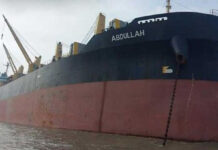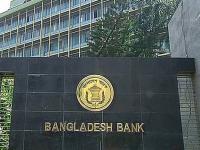The challenges ahead. This is the second and concluding portion of a two-part op-ed on the power sector.
Despite the numerous and noteworthy achievements and initiatives in the power sector over the last nine years, Bangladesh still faces significant challenges when it comes to energy security, supply, and access.
Besides the technical problems discussed in this article, our biggest challenge is the proper and timely implementation of projects, because delays and disruptions are extremely costly – both in terms of project financing and in terms of lost economic output.
Thus, while the government has undertaken several praiseworthy projects — and plans to initiate more — ensuring that these initiatives are actually executed as planned should be our number one priority.
Domestic Gas Depletion
Bangladesh used to be excessively dependent on domestic gas, with almost 96% of electricity generation coming from gas in 2009.
At present, domestic sources of gas are becoming increasingly unreliable and the finite resource is dwindling fast.
The government’s plan is to increase reliance on coal-fired generation, hence the construction of several coal-based power plants.
Under the proposed Power Supply Master Plan (PSMP) 2016, 60%-70% of electricity supply will be from imported electricity or imported fuel (LNG).
Grid Stability
Transmission capacity in Bangladesh is not growing fast enough to cope up with power generation, resulting in supply bottlenecks in important commercial corridors such as Chittagong and Comilla.
Also Read- Powering the way to prosperity
Unexpected outages, like the November 2014 country-wide blackout, perpetuate concerns about the security and stability of the country’s power grid.
Power system frequency in Bangladesh varies routinely on normal days between 48.9-51.2 Hz, going as low as 48.7 Hz and as high as 51.5 Hz under contingency. This is a major impediment to system reliability and also causes severe economic loss including our-of-merit dispatch.
Distribution bottleneck
Present capacity of distribution lines in Bangladesh is about 420 thousand kilometers and sub-station capacity is about 20 thousand MVA.
Despite significant improvements, the current infrastructure is not enough to ensure uninterrupted supply for all by 2021. A huge number of new distribution lines and sub-stations will need to be constructed to fulfill that goal.
Land availability
As one of the most densely populated countries in the world, Bangladesh has limited land for electricity generation development, be it for coal mining, thermal power generation, utility-scale solar or hydroelectricity.
With 66% of the population still based in rural areas, this is a key constraint that requires careful management.
Off-Grid electrification
The main challenge to providing reliable and quality electricity supply across the board is the electrification of off-grid areas, where expansion of national grid is highly expensive and time consuming.
To overcome this barrier, the government is trying to develop the use of renewable energy in remote islands and hill tracts.
Overcoming the hurdles
The obstacles we face — though difficult — are not insurmountable; below is a discussion of the strategies we can use to ensure energy security.
Fuel Diversification
Natural gas is currently the main fuel for power generation in Bangladesh, but this finite resource won’t last forever.
Recognising the importance of primary fuel for power generation, the government is diversifying the fuel mix by gradually shifting to coal, LNG, and other available fuel besides gas.
Free Governor Mode of Operation (FGMO): A potential remedy for grid instability is with the simple primary governor control scheme. A set of trials with FGMO with limited number of generating units was conducted with encouraging results. Simple yet effective measures like these can provide enormous relief to the power system and pave the way for it to grow rapidly over the coming decades.
These experiments are also highly relevant for a number of other developing countries experiencing similar issues to systematically explore frequency control measures.
Distribution augmentation
An integrated power distribution program has been undertaken to bring 100% of the population under electrification as well as improve customer service.
We need another 159km of new lines augmentation and modernisation of the existing distribution system to ensure uninterrupted supply for all.
To that end, the government is taking the following measures in distribution: Conversion of overhead system into underground system; implementation of smart grid system and pre-paid metering program; replacement of overloaded transformers; renovation and overhauling of distribution lines and sub-stations; expansion of the existing network.
Overall Evaluation
The power sector can and should play a critically important role in reaching Bangladesh’s sustainable development goals through a cost-effective, long-term investment program that prioritises clean energy, smart grid, and energy efficiency.
Increased electricity imports would best serve the country in terms of energy security as opposed to a heavy reliance on fossil fuel imports.
Through the successful implementation of the power sector plans, reliable energy supply will no longer be just a dream. Bangladesh can once again serve as an example for development all over the world as we did with regard to the Millennium Development Goals (MDGs).
Only by improving our power sector can we can look forward to a continued period of strong, sustainable economic growth and development.
Mohammad Hossain is the director general of Power Cell, Power Division, Ministry of Power, Energy & Mineral Resources.
Source: Dhaka Tribune.












